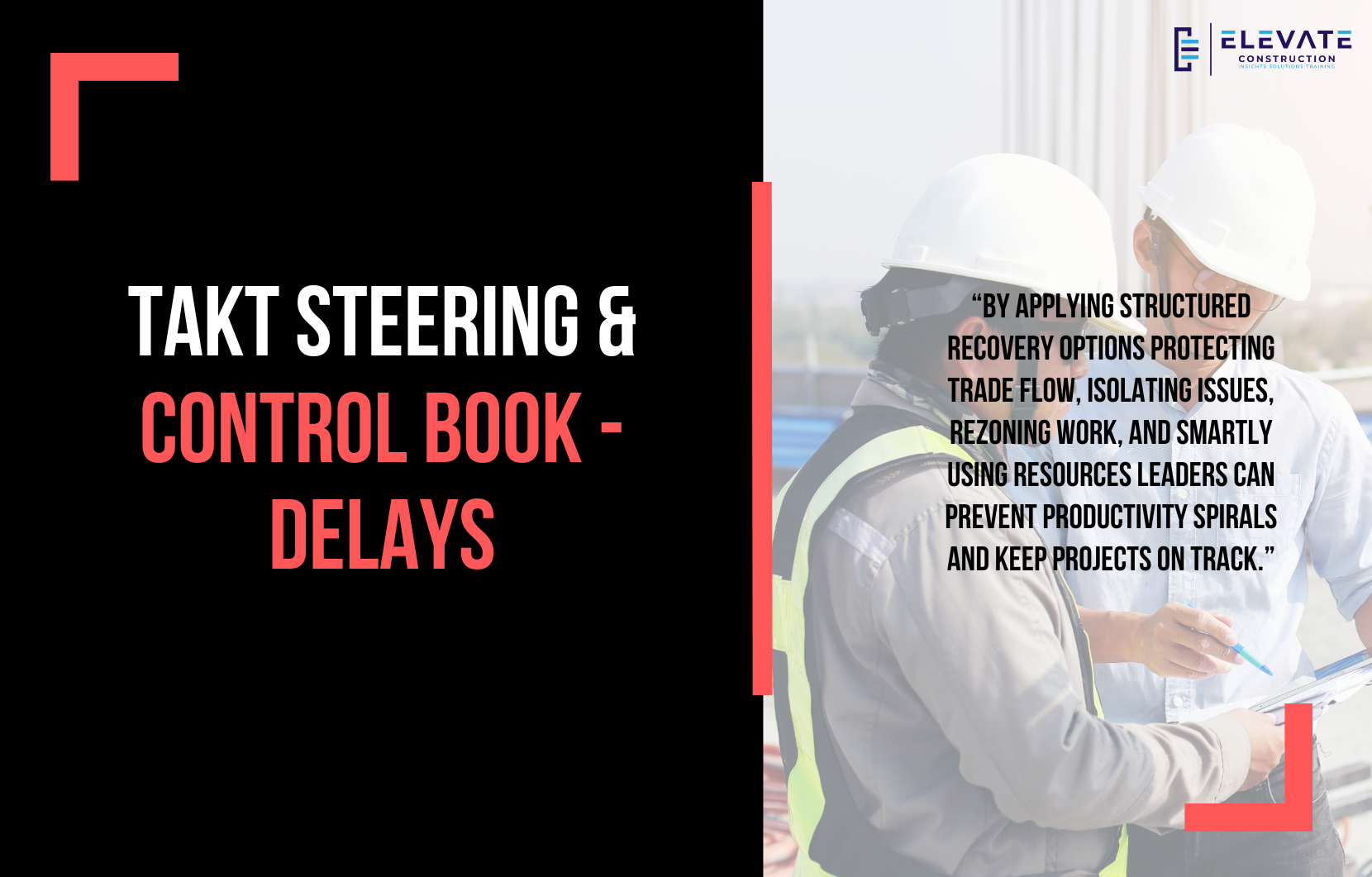Practical Options for Recovery
In construction, delays are inevitable but how we deal with them makes all the difference. TAKT planning, steering, and control is designed to prevent delays, but when they do happen, we need structured methods to handle them without compromising flow or productivity.
Here are several proven approaches for managing delays on a project:
- Line of Balance Dela:
When delays occur, protect your trades. Don’t stack or overload successor crews. Instead, maintain the line of balance the visual representation of flow against time.
This often means eating into project buffers or using them as intended. Crews can also be switched to workable backlog tasks to stay productive while waiting for flow to resume.
- Sequence Delay
Sometimes delays can be absorbed by modifying the sequence of work. If materials are available and the sequence still works, this can be an effective option.
Before consuming buffers or making drastic changes, always check whether sequence adjustments can resolve the issue.
- Isolated Delay
For localized problems, you can detach the wagon (an activity) from the main flow or isolate the affected area from its zone. This allows the main train of trades to keep moving while the isolated work is scheduled separately through TAKT, pull planning, or even a scrum board.
This approach is especially effective when end user changes or design revisions affect specific rooms or areas.
- Utilizing Resources to Recover
While not the first choice, delays can sometimes be recovered by adding resources such as bringing in a highly skilled, fully on boarded crew or reallocating swing capacity from crews working on backlog tasks.
It’s important to avoid using unproven or underperforming teams, as this can create more problems than it solves.
- Rezoning Delay
Rezoning is often the most powerful tool for recovery. By breaking down zones into smaller sections (e.g., moving from three zones to nine), teams can pull the plan back on track and regain flow.
This approach works best when combined with proactive problem solving and swarming the issue early.
The Bottom Line
Delays shouldn’t automatically spiral into lost productivity or chaos. With the right strategies line of balance, sequence changes, isolating activities, resource reallocation, and rezoning teams can absorb disruptions while maintaining flow and stability.
Preventing delays is always the priority, but when they do occur, structured recovery methods keep projects moving forward without sacrificing quality or morale.
Key Takeaway
Delays are inevitable in construction, but chaos is not. By applying structured recovery options protecting trade flow, isolating issues, rezoning work, and smartly using resources leaders can prevent productivity spirals and keep projects on track.
If you want to learn more we have:
-Takt Virtual Training: (Click here)
-Check out our Youtube channel for more info: (Click here)
-Listen to the Elevate Construction podcast: (Click here)
-Check out our training programs and certifications: (Click here)
-The Takt Book: (Click here)
Discover Jason’s Expertise:
Meet Jason Schroeder, the driving force behind Elevate Construction IST. As the company’s owner and principal consultant, he’s dedicated to taking construction to new heights. With a wealth of industry experience, he’s crafted the Field Engineer Boot Camp and Superintendent Boot Camp – intensive training programs engineered to cultivate top-tier leaders capable of steering their teams towards success. Jason’s vision? To expand his training initiatives across the nation, empowering construction firms to soar to unprecedented levels of excellence.
On we go


